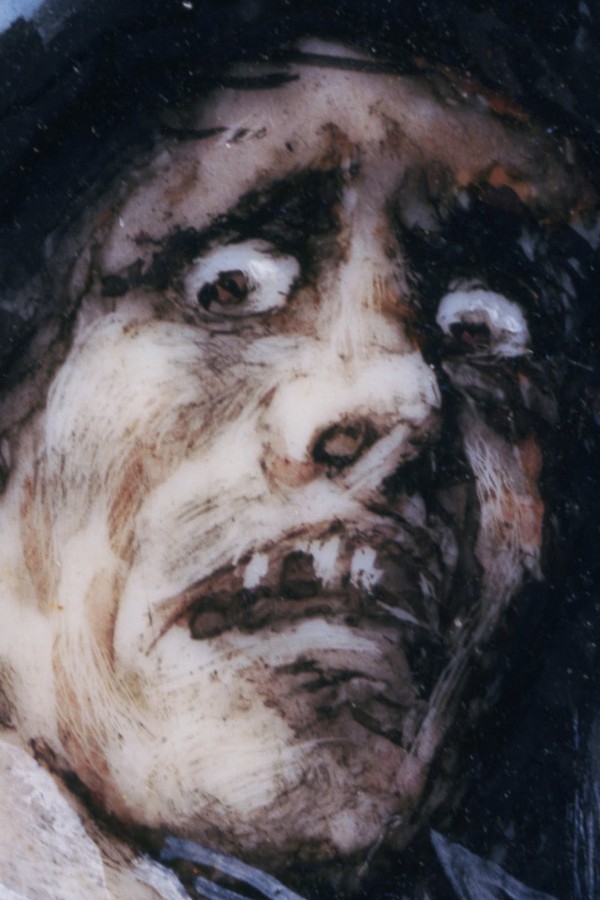Old Woman, 1824–1825

Date: 1824–1825
Creator of the image: Francisco Goya Date of the image creation: 1824–1825 Medium of the image: Watercolour on ivory Person depicted: An old woman This image was painted by Francisco Goya (1746–1828), a Spanish painter, referred to as the last of the Old Masters and the first of the Moderns. The tiny artwork currently resides in Princeton University’s Art Museum. Their catalogue entry for this artwork is worth quoting at length: ‘This haunting miniature … exemplifies Goya’s interest in various painting techniques and his experimental use of media for expressive effect. A tall monk and a smaller old woman seem frightened or surprised by something they see in our direction. The monk appears to talk to the horrified, staring woman. The unsettling quality of their expressions and ambiguity of the scene are characteristic of Goya’s genius.’ ‘The refinement of the palette, precious support, and intimate scale suggest the ivories painted in exile were intensely private. Goya’s experience of creating works of art in series (especially in his prints) is evident in this medium, as he worked out similar disturbing scenes with psychological overtones in the other known ivories. They build on his achievement in the enigmatic Black Paintings, completed in the Quinta del Sordo a few years before he left Spain for Bordeaux. Such disquieting content, long present in peripheral figures in the paintings or as primary subject matter in his prints, is here allowed free reign. Goya’s miniatures are a towering achievement.’ ‘According to the only written account, Goya worked from a spot of water dropped on the surface of the ivory, which he had blackened. It remains a mystery what led the aged artist to experiment in this manner. The order in which the preserved miniatures were painted and the reconstruction of the progress of his technical skill in the new medium are likewise issues to be studied further by specialists. ‘ ‘Goya surpasses all of his contemporaries in his modernity. With his emphasis on the primacy of artistic process and chance, and of uncertain and subjective meanings, he reaches beyond Romanticism and sows the seeds for the artistic developments of the late nineteenth and early twentieth centuries. That he should do so most persuasively and enigmatically in the medium of these small miniatures, painted on the thinnest sheets of ivory, is astonishing, as he subverts and renews an art form traditionally intended for portraits, small likenesses to be carried or worn on one’s person.’
Quotes
No quotes found.
Login to add a quote


